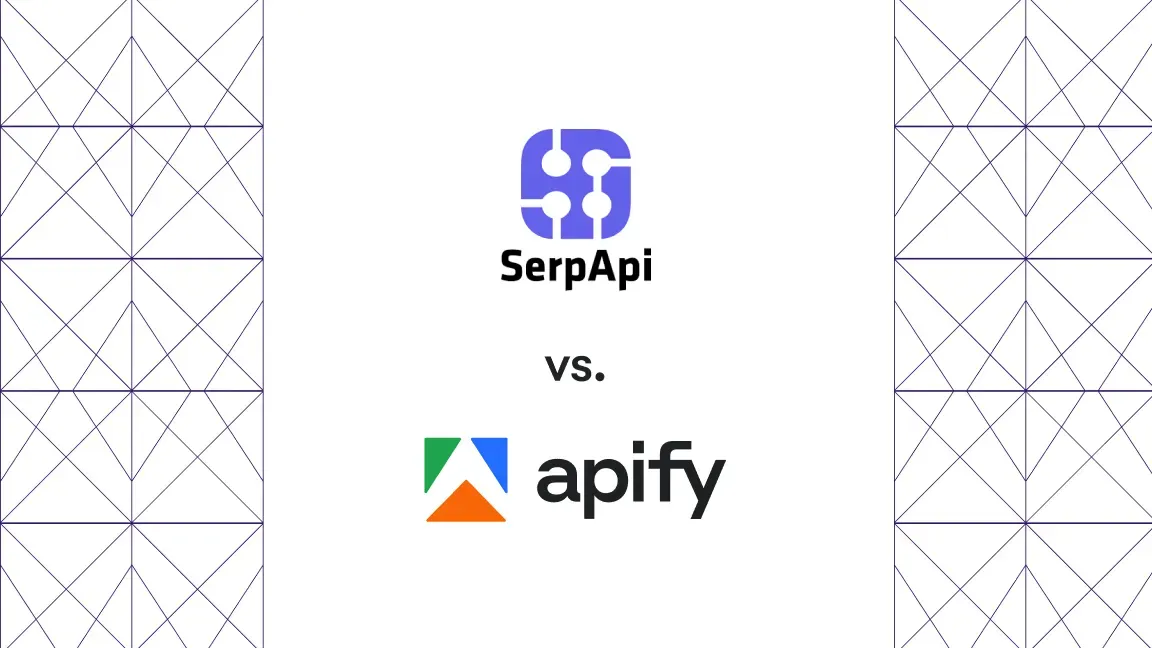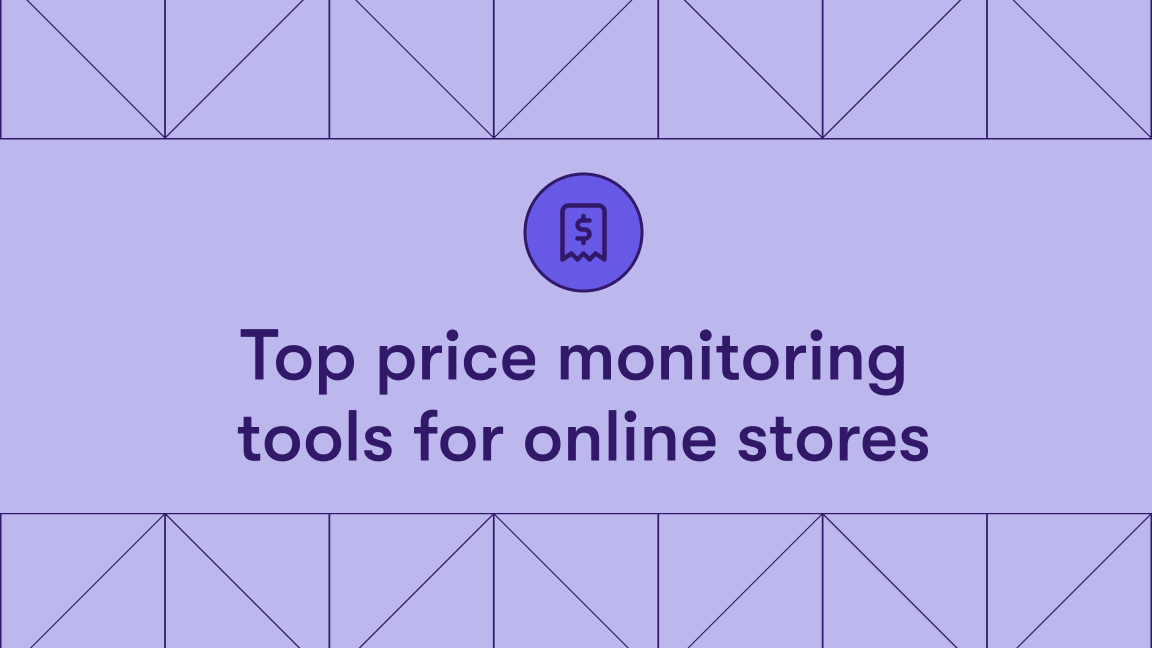If you're looking for tools to design, test, document, and manage APIs, you might be considering adding Apidog and RapidAPI to your tech stack. Both platforms are built to streamline API workflows. They let you send and test API requests, use configurable environments and variables for different stages (development, staging, production), organize APIs in a central workspace, and include monitoring tools to track request performance and error rates. They differ in purpose, though:
Apidog focuses on the entire API lifecycle - from design and mocking to testing, documentation, and team collaboration - making it ideal for developers building or maintaining APIs internally or with trusted partners.
RapidAPI, meanwhile, serves as a marketplace and hub for API discovery and monetization, best suited for teams that want to publish APIs, manage subscriptions, and reach external developers through a centralized platform.
| Feature category | RapidAPI | Apidog |
|---|---|---|
| Request + HTTP client | Supported via VS Code extension and browser-based testing interface | Full-featured API development environment (REST, WebSocket, GraphQL, etc.) |
| Testing and scripting | JavaScript (Node.js-style) | Automated testing with JavaScript-based scripts |
| Environments and variables | Multiple environments supported, less advanced scoping | Supports environmental configuration and variable parameterization |
| Collaboration | Limited: shareable public APIs, but not full team features | Multi-user collaboration and real-time sync |
| Monetization | Monetize via Hub with pricing plans and usage tiers | No public monetization |
| Charging model | Usage-based per API; RapidAPI takes ~20% commission | Subscription for platform use |
| API discovery | Public catalog to browse, subscribe, and test APIs | API Hub with mainstream APIs + documentation |
| CI / automation integrations | Webhook-based CI/CD triggers, no native integrations | Built-in mock servers, supports various CI/CD pipelines |
| Community and support | Formal issue support and documentation available | Growing community; tutorials, docs, Discord |
| Monitoring | Scheduled tests, failure alerts, geo-distributed “workers” | Custom dashboards, documentation hosting, test reports |
| Product maturity / roadmap | Founded 2015 - very mature ecosystem | Founded 2022 - frequent updates |
RapidAPI: Marketplace for monetizing APIs

RapidAPI is positioned as both an API marketplace and an operations hub, designed for teams that need testing tools alongside a platform to publish APIs for external developers. It offers API publishing with monetization options, including usage plans and subscription tiers, all managed through the RapidAPI Hub. The marketplace hosts thousands of public APIs, giving developers a centralized space to discover, test, and subscribe to services.
Beyond publishing, RapidAPI includes integrated testing and basic monitoring for performance and SLA compliance. Developers can also use the RapidAPI VS Code extension to build, test, and send API requests directly from their editor. Meanwhile, RapidAPI Studio provides a workspace for importing or exporting APIs via OpenAPI specifications, configuring environments, generating code snippets, writing tests, and publishing APIs to the Hub.
Apidog - an API lifecycle management platform
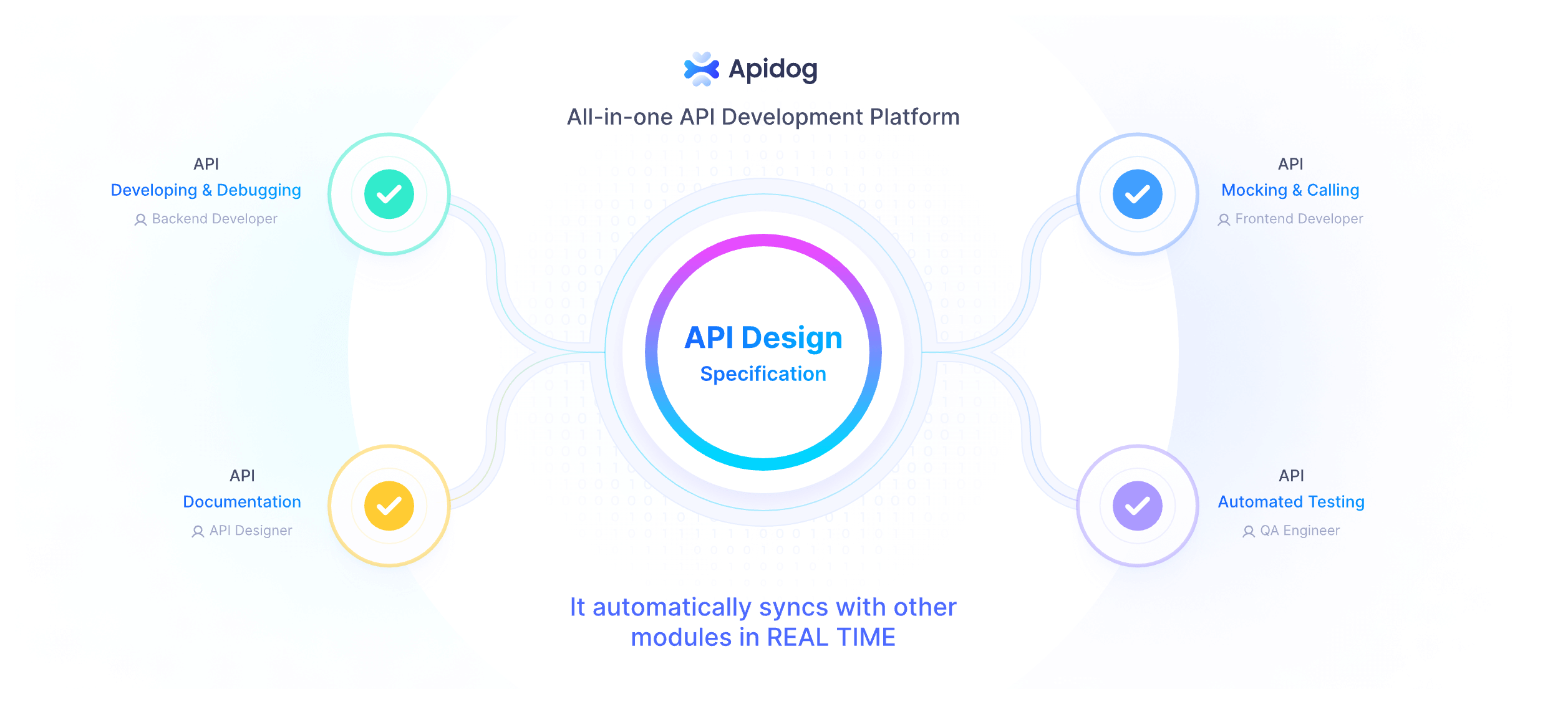
Apidog is a comprehensive API development and lifecycle management platform, suitable for teams that need to design, mock, test, document, and manage APIs collaboratively. It provides full API design and documentation tools with OpenAPI support, schema modeling, and automatic example generation. Developers can use built-in mock servers to simulate endpoints and responses, enabling realistic testing before backend implementation. Apidog also supports automated testing and CI/CD integration, with features for pre- and post-request scripts, chained requests, and reusable test suites.
Its real-time collaboration tools allow multiple developers to work together through shared workspaces, comments, and version history tracking. Using the Apidog CLI or web interface, teams can import or export APIs, manage environments and variables, generate documentation, and run automated test workflows. Additionally, the Apidog API Hub lets users browse, share, or clone APIs for internal discovery and documentation - but focusing on accessibility and governance rather than monetization.
Design-first vs. consumption-first
Apidog is built with design as the core focus. It includes visual API modeling, OpenAPI-based schema definition, example generation, and branching for version control.
RapidAPI, by contrast, isn’t a design environment - it’s a management and distribution platform.
| Feature | RapidAPI | Apidog |
|---|---|---|
| Design APIs visually | ❌ | ✅ |
| Import/export OAS | ✅ | ✅ |
| Define and reuse schemas | ❌ | ✅ |
| Generate API specification from request | ❌ | ✅ |
| Generate example automatically | ❌ | ✅ |
| Branches – parallel versions of an API specification | ❌ | ✅ |
| Discovery | ✅ | ✅ |
| Monetization | ✅ | ❌ |
Collaboration features
Apidog enables teams to work together cohesively throughout the entire API lifecycle. In shared workspaces, multiple users can edit the same API in real time - with visible editor avatars and inline comments that show exactly who’s making changes. Developers can also generate collaboration links to share specific endpoints, documentation views, or entire projects directly with teammates, ensuring quick reviews without complex navigation. Access is controlled through role-based permissions, defining who can view, edit, or publish APIs across the organization. Apidog also extends version control to every layer of collaboration: every change to an API definition, test, or document is recorded, allowing teams to review version history, compare edits, and roll back to previous states when needed.
This makes Apidog well-suited for multi-developer environments, where product managers, backend engineers, and QA testers need to work together on the same API projects from design through deployment.
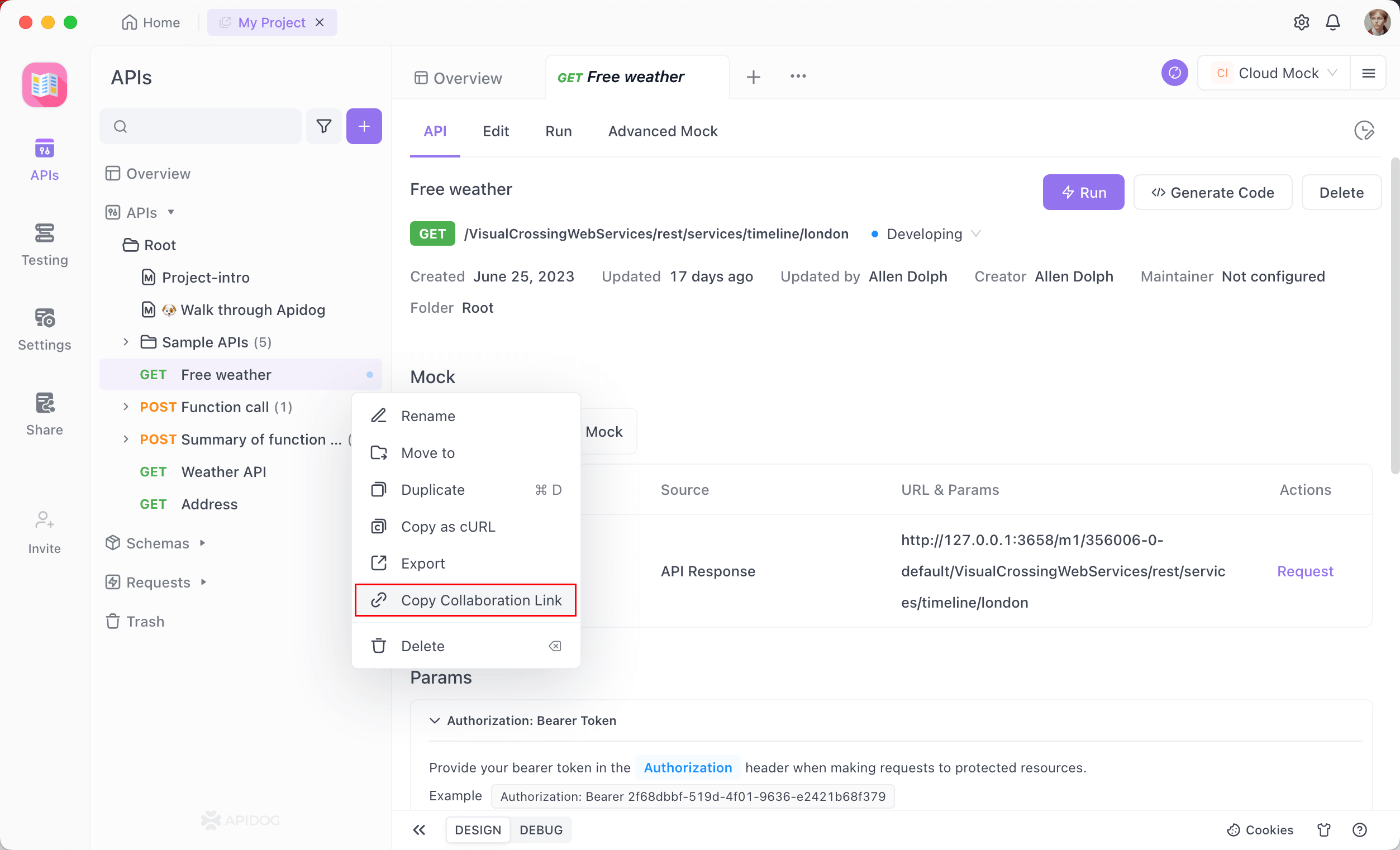
In RapidAPI, collaboration is not a central focus of the platform. While teams can publish APIs internally (through a shared Enterprise Hub or organization space), there is no real-time, shared editing model. Its versioning system is rather designed with consumers in mind - tracking API versions such as v1 or v2 that are publicly released - rather than supporting collaborative version control of requests or documentation edits. In short, RapidAPI doesn’t facilitate co-editing or real-time collaboration.
Two hubs with different goals
The RapidAPI Hub functions as a full-scale API marketplace built for distribution and monetization: API providers can publish their APIs to the Hub, define pricing tiers, quotas, and usage limits, and manage access through a dashboard. Developers then subscribe to APIs using RapidAPI’s built-in billing and account system, with payments and authentication handled directly through the platform. RapidAPI also provides analytics, performance monitoring, and request tracking, giving both providers and consumers clear insight into API usage and reliability.
By contrast, the Apidog API Hub serves as a shared library of public and community APIs rather than a monetized marketplace. It contains thousands of mainstream APIs that developers can browse, test, and clone into their own workspaces for reference or reuse. Teams building APIs in Apidog can also publish their documentation to the Hub, subject to approval by Apidog’s review team, to make their APIs discoverable to other developers. However, the Apidog API Hub focuses on documentation sharing and internal discovery, not on subscription management or payment processing.
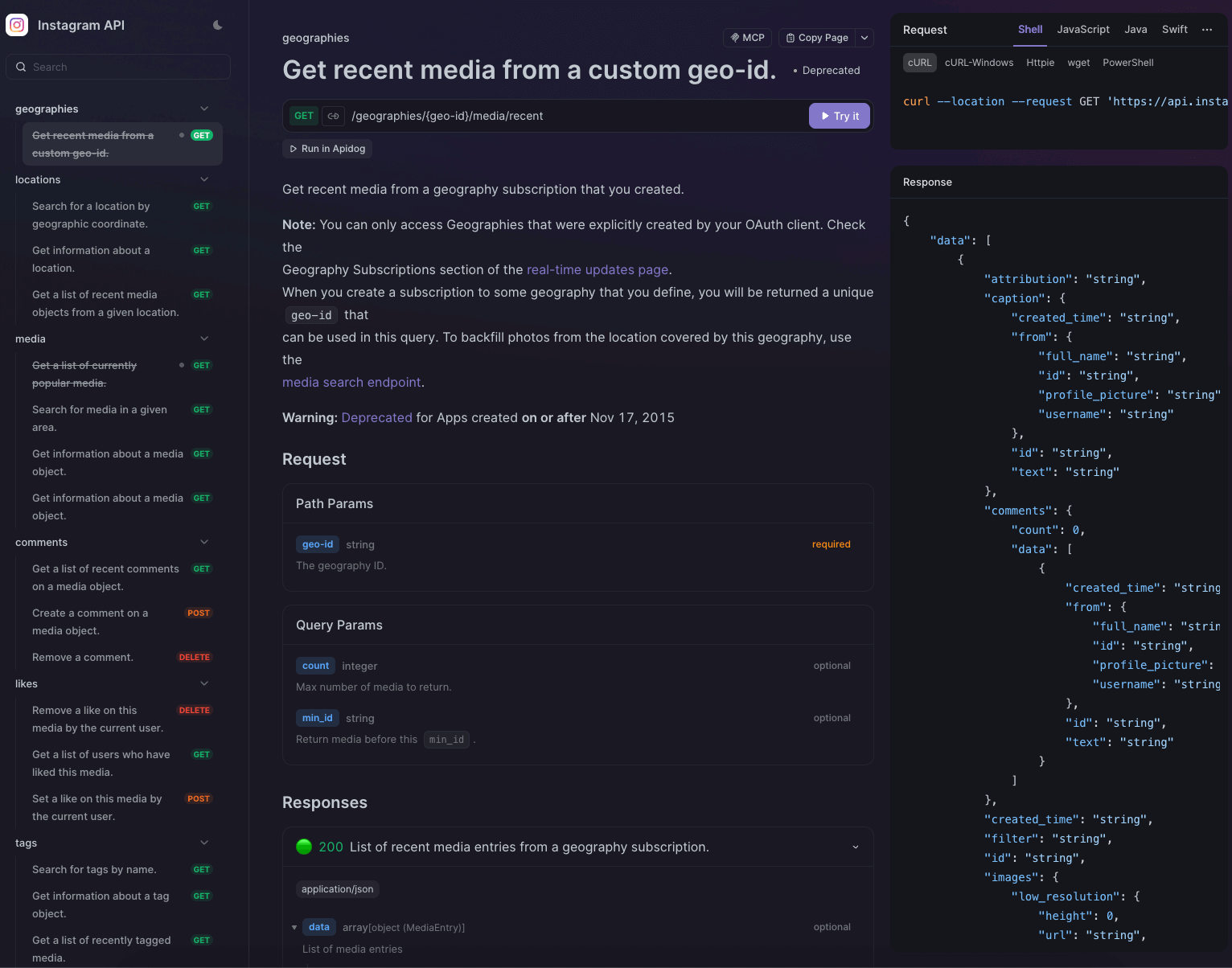
Pricing models
The pricing models for Apidog and RapidAPI serve different business objectives.
Apidog follows a subscription-based pricing model: Charging teams a flat fee to use its suite of API design and development tools. Plans start around $12 per user per month, with tiers such as Basic, Professional, and Enterprise scaling based on the number of team members and available resources. A free tier is also available, offering most of the platform’s core features with limited project capacity. This makes it accessible to individual developers and small teams who want to explore or prototype without an upfront cost.
RapidAPI, in contrast, uses a usage-based pricing model centered on the monetization of API consumption: The platform itself is free to access, but costs arise through API subscriptions and usage fees. API providers on the RapidAPI Hub can define their own pricing plans - free, freemium, or paid - with limits based on calls or quotas. Developers subscribing to these APIs are billed accordingly, and RapidAPI takes a 20% commission from API providers.
Choosing the right tool for your use case
If you’re designing and maintaining APIs inside your organization, you’ll need collaborative editing, testing, and documentation. If you’re releasing APIs for public use, you should look into monetization features with subscriptions, analytics, and billing.
| Use case | Best platform | Why |
|---|---|---|
| Internal API design, test automation | Apidog | Complete API lifecycle support: visual design, schema modeling, mocking, testing, and team collaboration in one interface. |
| Public API publishing and monetization | RapidAPI | Marketplace designed for API distribution: built-in billing, subscription management, analytics, and global developer reach. |
| Hybrid approach | Use both | Design and test your API in Apidog, then publish it to RapidAPI for external developers and monetization. |
Third option for data APIs: Apify
When your API work needs to move beyond testing and consumption and includes dealing with web content extraction, Apify’s platform is already built for it - letting developers turn any website into an API.
It provides an open-source SDK, ready-made scrapers on Apify Store, and a cloud runtime with scheduling, scaling, and monitoring built in.
Apify’s marketplace - Apify Store - offers over 8,000 scrapers and automation tools (called Actors) that handle anti-bot measures, use proxies, and are highly specialized, designed to perform a specific task, be it scraping social media posts, e-commerce data, or lead collection.
- Developers can build their own scrapers in Apify Console using templates or custom code, and monetize them through Apify Store.
- Consumers can browse scrapers by category, service type, or author and run them instantly thanks to a no-code UI. Each scraper automatically exposes a ready-to-call API endpoint with JSON, CSV, or Excel output.
What you get with Apify
- Infrastructure is provided - you deploy scrapers to Apify’s cloud without the need to host your own servers
- Auto-generated user interface based on the input schema for each Actor so that non-coders can tweak input easily (using keywords, URLs, or filters)
- Built-in proxy rotation, anti-blocking logic, and session management to help reduce IP blocking or detection
- Monitoring console with run status, granular metrics (with detailed logs and error classifications), as well as alerts set in Console, via email or Slack
- You can schedule Actors or tasks to run automatically
- Built-in monetization: pay per event, subscriptions, custom Actors

Apify gives you multiple ways to trigger and manage Actors, depending on your workflow. You can use a ready-to-go solution directly in Apify Console using the UI, or - you can start it from your local machine using Apify CLI, Apify API or SDK client and run it in the cloud.
Choose your platform
Apidog is a true end-to-end platform, bringing structure and collaboration to the entire development process, from first draft to deployed endpoint.
RapidAPI, on the other hand, is the leading marketplace for publishing and monetizing APIs, giving developers a ready-made distribution channel, built-in analytics, and a managed billing system.
Together, the two platforms can span the full API lifecycle - from creation in Apidog to publishing and commercialization in RapidAPI.
And when your workflow moves beyond existing APIs and into web data extraction, Apify fills the gap. It lets you turn any website into an API, making it an ideal companion for developers who need to enrich their APIs or datasets with real-world, dynamic web content.



